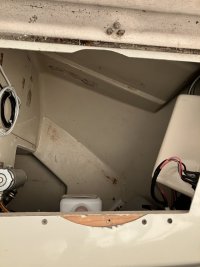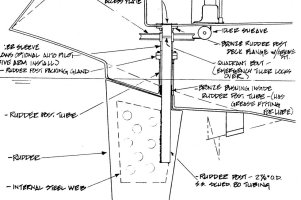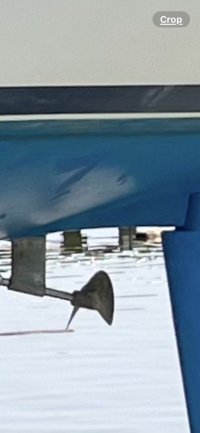Also, here are some pictures from my PSS leak in 2020. The flow of water would be similar for a rudder post leak.
Water from the prop shaft log (or rudder tube) flows forward along the hull, then goes under the engine pan (you can see the leaking water flowing just below the arrow):
View attachment 51538 Under the engine pan.
When it comes out from under the engine pan, water is first visible again in the bilge with the small, single keel bolt.
View attachment 51539 Small, single keel bolt.
Between the engine pan and this first bilge pocket, water is not visible (flows under the TAFG). Here's what it looks like if you pull up the floorboard:
View attachment 51545
After this, water is free to flow under the TAFG in the bilge areas and will be begin filling each bilge pocket from below, as it rises to the level of their limber holes.
If you can remove your water heater (and the wood plate that it sits on), it gives you a good inspection of the rudder tube and strut areas.
View attachment 51540
There is a molded-in "pocket" just forward of the rudder tube that fills with water (and debris) before water can flow forward along the hull:
View attachment 51542 Pocket.



